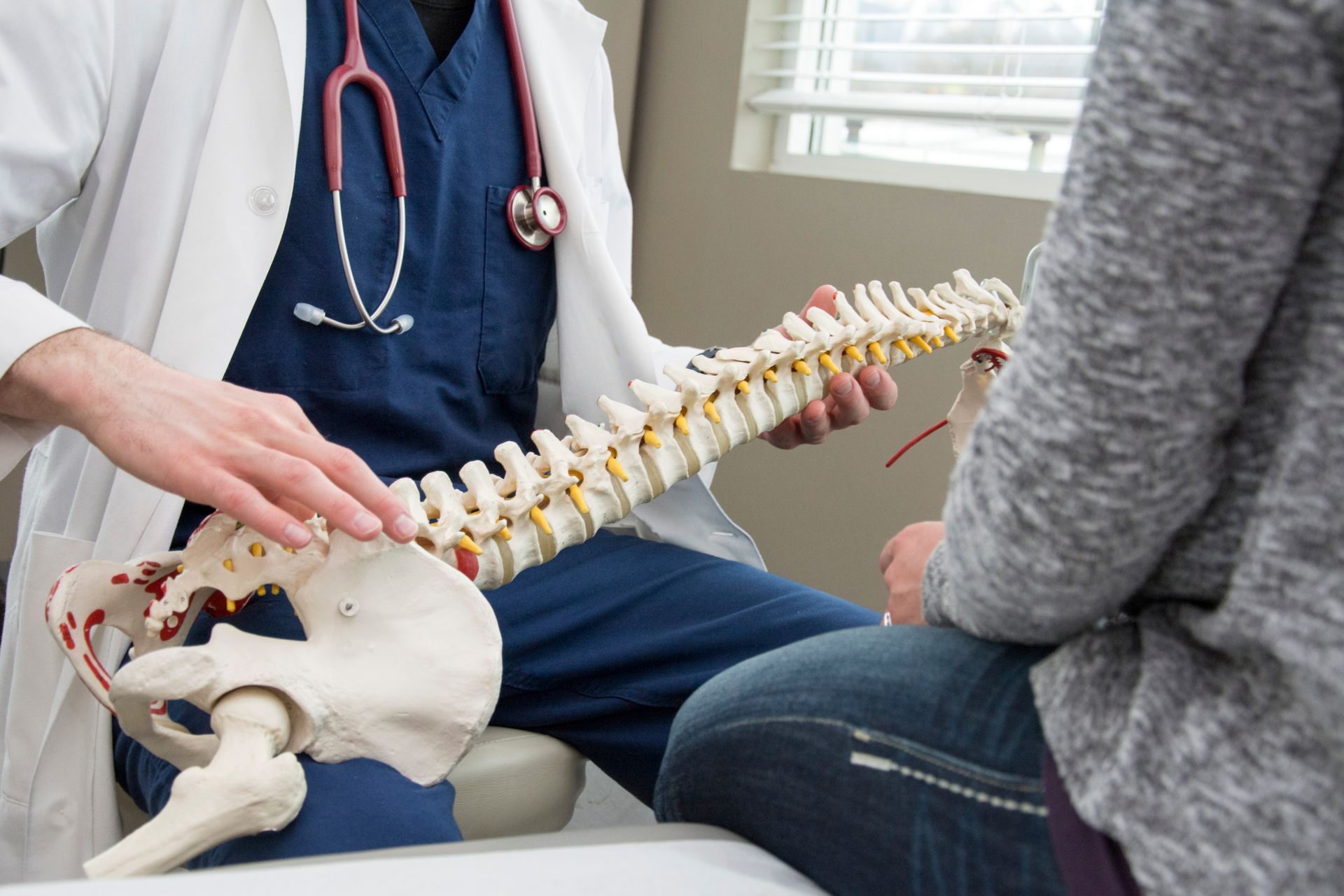The Pop, The Crack, The Truth: What Really Happens During Chiropractic Adjustments
Key Points
- The "crack" you hear during adjustments is gas bubbles releasing from joint fluid—not bones grinding or breaking
- This phenomenon, called cavitation, is completely normal and harmless
- The popping sound doesn't indicate treatment effectiveness—successful adjustments can be silent
- Joint manipulation is safe when performed by licensed chiropractors
- You cannot "break" or "crack" bones during proper chiropractic treatment
- The satisfaction of hearing the pop is psychological, not medical
- Understanding the science removes fear and helps you relax during treatment
- Effective chiropractic care focuses on joint mobility and function, not sound production
Let's address the elephant in the room—or rather, the crack in the treatment room. That popping, cracking sound during chiropractic adjustments makes some people deeply satisfied and others absolutely terrified. Maybe you love the sound, finding it strangely gratifying. Or maybe you're convinced something important is breaking inside your body every time you hear it.
Here's what's wild: that distinctive pop has spawned more myths, misconceptions, and outright fears than almost any other aspect of healthcare. People imagine bones grinding against each other, joints being forced past their limits, or permanent damage occurring with each crack. Some folks are so disturbed by the sound that they avoid chiropractic care entirely, suffering through back pain rather than face the mysterious popping.
The reality? What causes the cracking sound in chiropractic adjustments is far less dramatic than the myths suggest. It's a simple, well-understood physical phenomenon that's about as harmful as releasing air from a tire. The sound isn't bones rubbing, grinding, or breaking—it's just gas.
Yes, gas. Specifically, gas bubbles in your joint fluid doing what bubbles do when pressure changes. Not exactly the stuff of horror movies.
Let's break down the actual science, dispel the fears, and help you understand what's really happening when your chiropractor delivers that adjustment.
The Science of the Pop: Understanding Cavitation
The technical term for the popping sound is joint cavitation, and it's based on straightforward physics that has nothing to do with bone damage.
What's Inside Your Joints
Your joints aren't just bone rubbing against bone. Between the bones sits a small space called the joint capsule, filled with synovial fluid. Think of this fluid as nature's lubricant—it reduces friction, nourishes joint cartilage, and allows smooth, pain-free movement.
Synovial fluid contains dissolved gases—primarily nitrogen, oxygen, and carbon dioxide. Under normal circumstances, these gases remain dissolved in the liquid, similar to how carbon dioxide stays dissolved in a sealed soda bottle.
The Pressure Change
When a chiropractor applies a quick, controlled force to a joint during an adjustment, they're creating a rapid change in pressure within that joint space. This sudden pressure drop is the key to the whole process.
As pressure decreases, the joint capsule temporarily expands. This expansion creates a low-pressure environment inside the joint—kind of like stretching a sealed balloon from the outside.
The Gas Release
Here's where the magic happens. When pressure inside the joint drops suddenly, those dissolved gases can no longer stay dissolved. They rapidly form bubbles in a process called tribonucleation—the fancy scientific term for bubble formation.
This gas bubble formation happens in a fraction of a second, creating vibrations in the synovial fluid and surrounding tissues. These vibrations produce the characteristic popping or cracking sound you hear.
It's essentially the same physics that causes your knuckles to crack, champagne to fizz when opened, or a shaken soda to bubble when you open the cap. Pressure changes, gases come out of solution, bubbles form, you hear a pop.
What Happens After the Pop
Once the gas bubble forms, it doesn't just disappear. The gases gradually re-dissolve into the synovial fluid over the next 20-30 minutes. This is why you typically can't crack the same joint repeatedly right after an adjustment—the gases need time to dissolve back into solution before another pressure change can create another bubble and another pop.
This refractory period is actually protective. It prevents excessive manipulation of joints in rapid succession.
What the Pop Is NOT
Let's directly address the most common fears about chiropractic adjustment sounds:
It's NOT Bones Grinding
Your bones are not scraping, rubbing, or grinding against each other. The surfaces of healthy joints are covered with smooth cartilage and separated by lubricating fluid. The adjustment doesn't change this relationship—it just creates a temporary pressure change in the fluid between the bones.
It's NOT Bones Breaking or Cracking
No bones are breaking, fracturing, or cracking during a chiropractic adjustment. Bone is remarkably strong tissue that requires significant force to break—far more than the controlled pressure used in adjustments.
The term "cracking your back" is misleading because nothing is actually cracking. It's an unfortunate figure of speech that creates unnecessary fear.
It's NOT Ligaments or Tendons Snapping
While ligaments and tendons can sometimes make popping sounds when they move over bony prominences (like your hip "clicking" when you walk), the adjustment sound is different. It's specifically the gas bubble formation in the joint fluid, not soft tissues snapping or slipping.
It's NOT Cartilage Tearing
The smooth cartilage covering your joint surfaces remains intact during adjustments. Properly performed chiropractic manipulation works within the normal range of joint motion and doesn't damage cartilage.
It's NOT a Measure of Treatment Success
Here's something that surprises many people: an adjustment can be completely effective without any popping sound at all. The absence of a crack doesn't mean the adjustment "didn't work."
Some joints naturally don't produce much sound. Some adjustments restore mobility and function silently. The pop is a side effect of the adjustment technique, not the goal or measure of success.
Why Does It Feel So Good?
If the pop isn't inherently therapeutic, why do so many people find it satisfying? There are several reasons why chiropractic adjustments feel good:
Endorphin Release
The mechanical stimulation of the adjustment triggers your body to release endorphins—natural pain-relieving chemicals. This endorphin flood can create an immediate sense of relief and wellbeing that people associate with the popping sound.
Muscle Relaxation
Adjustments often relieve muscle tension around the affected joint. When tight muscles suddenly relax, it creates a pleasurable sensation of release that coincides with the audible pop.
Restored Mobility
When a restricted joint suddenly moves through its full range again, your nervous system registers this change. The brain interprets restored function as relief, creating positive feelings that get mentally linked to the sound.
Psychological Satisfaction
There's a psychological component too. Many people have learned to associate the popping sound with relief and healing. This conditioned response means the sound itself becomes satisfying, regardless of its actual therapeutic value.
It's similar to how some people find certain ASMR sounds pleasurable—the brain creates positive associations with specific sensory experiences.
Pressure Relief
Some people genuinely feel pressure or discomfort in joints before adjustment and relief afterward. While this isn't directly caused by the gas release, the timing creates a mental connection between the pop and the relief.
Is Joint Manipulation Safe?
The big question: is chiropractic manipulation safe? When performed by licensed, trained chiropractors on appropriate patients, the answer is a resounding yes.
The Safety Record
Research consistently shows that chiropractic adjustment is remarkably safe:
Serious adverse events are extremely rare: Studies estimate serious complications occur in 1 in 2 million cervical (neck) manipulations and even less frequently with spinal manipulation.
Minor side effects are temporary: Some patients experience mild soreness, stiffness, or fatigue after adjustments. These typically resolve within 24-48 hours and are similar to post-exercise muscle soreness.
Risk is far lower than medication alternatives: The complication rate for chiropractic adjustment is significantly lower than the risk of serious side effects from long-term pain medication use or surgical interventions.
When It's Not Appropriate
Certain conditions contraindicate manipulation or require modified techniques:
Severe osteoporosis: Bones weakened by severe osteoporosis might not tolerate the forces involved in adjustment.
Spinal fractures or dislocations: Obviously, broken bones need different treatment.
Bone tumors or infections: These conditions require medical intervention before any manipulation.
Severe arthritis with instability: Some arthritic conditions create joint instability that manipulation could worsen.
Recent surgery in the treatment area: Healing tissue needs time before manipulation is safe.
Bleeding disorders or blood thinners: Increased bleeding risk makes manipulation inadvisable in some cases.
Vascular conditions: Certain blood vessel abnormalities in the neck area require caution.
Signs of spinal cord compression: Numbness, weakness, or loss of bowel/bladder control need immediate medical evaluation, not adjustment.
This is why chiropractors take thorough health histories and perform examinations before treatment. They're trained to identify contraindications and refer to appropriate medical specialists when needed.
The Chiropractor's Training
Licensed chiropractors complete extensive education specifically focused on safe, effective manipulation:
Minimum education: Doctor of Chiropractic (D.C.) degree requiring at least 4,200 hours of education
Anatomy expertise: Detailed study of musculoskeletal anatomy, biomechanics, and neurology
Technique training: Hundreds of hours practicing adjustment techniques under supervision
Diagnostic skills: Training to identify conditions appropriate for chiropractic care versus those requiring medical referral
Ongoing education: State licensing requires continuing education to maintain competency
This specialized training means your chiropractor understands exactly how much force to apply, which techniques suit which conditions, and when to refer rather than adjust.
Different Adjustment Techniques: Not All Crack
Types of chiropractic adjustments vary significantly, and not all produce the characteristic popping sound:
High-Velocity, Low-Amplitude (HVLA)
This is the classic adjustment technique that typically produces the cavitation pop. It involves a quick, controlled thrust to the joint, creating the pressure change that releases gas bubbles.
HVLA adjustments are effective for many conditions and are what most people envision when they think of chiropractic treatment.
Low-Force Techniques
Several gentle techniques can restore joint mobility without the dramatic pop:
Activator Method: Uses a small, spring-loaded instrument to deliver precise, gentle impulses to joints. This controlled force can restore mobility without audible cavitation.
Drop Table Technique: Utilizes special tables with sections that drop slightly when the chiropractor applies pressure. The dropping action assists the adjustment, often reducing the force needed and sometimes eliminating the pop.
Flexion-Distraction: Involves gentle stretching and pressure applied while the patient lies on a special table that moves. This technique rarely produces popping sounds but effectively addresses disc-related issues.
Mobilization
Joint mobilization uses slow, controlled movements to improve range of motion. This isn't the quick thrust of manipulation, so it doesn't create the pressure changes that cause cavitation. Mobilization is completely silent but can be very effective.
Instrument-Assisted Techniques
Various tools can deliver specific adjustments without the manual thrust that creates popping:
ArthroStim: A handheld instrument that delivers rapid, gentle thrusts at controlled speeds and depths.
Impulse Adjusting Instrument: Similar concept, using controlled mechanical force rather than manual thrust.
Why Different Techniques?
Chiropractors choose techniques based on:
- Patient preference and comfort
- Specific condition being treated
- Patient age and physical characteristics
- Presence of contraindications to certain techniques
- Treatment goals and outcomes desired
If the popping sound bothers you, communicate this to your chiropractor. They can often achieve excellent results using low-force or non-cavitating techniques.
Addressing Common Fears and Misconceptions
Let's tackle the specific worries people express about chiropractic safety concerns:
"Will My Bones Wear Out From Repeated Adjustments?"
No. The adjustment doesn't wear down bone or cartilage. In fact, proper joint mobility helps maintain cartilage health by promoting normal nutrient exchange in the joint.
Joints that don't move properly are more susceptible to degenerative changes, not less. Keeping joints mobile through appropriate manipulation can actually support long-term joint health.
"Can I Become Addicted to Adjustments?"
You can't become physically addicted to chiropractic adjustments. There's no chemical dependency involved.
Some people do prefer regular adjustments for maintenance and prevention, similar to how some people prefer regular massage. This is preference, not addiction.
If you feel you "need" adjustments very frequently just to function, discuss this with your chiropractor. It might indicate an underlying issue requiring different treatment or that your adjustment frequency should be modified.
"Will Adjustments Make My Joints Loose or Unstable?"
Properly performed adjustments restore normal joint mobility—they don't create hypermobility (excessive motion).
The goal is to return restricted joints to their normal range, not exceed it. Skilled chiropractors work within the normal physiological limits of each joint.
In rare cases where someone has underlying joint hypermobility syndrome, adjustments might be contraindicated or require modified technique. This is why patient screening is important.
"I'm Scared of Neck Adjustments—Can They Cause Stroke?"
This is the most serious concern people raise. While extremely rare complications involving neck arteries have been reported following cervical manipulation, the actual risk is minuscule—approximately 1 in 2 million manipulations.
Recent research suggests that when these rare events occur, many patients were already experiencing symptoms of arterial dissection before the adjustment. They sought chiropractic care for neck pain that was actually the first symptom of the vascular problem.
Chiropractors are trained to screen for signs of vascular issues before neck manipulation. If you have concerns about neck adjustments, discuss them openly with your chiropractor. They can:
- Perform thorough screening for contraindications
- Use alternative low-force neck techniques
- Focus treatment on other areas while avoiding neck manipulation
- Refer for medical evaluation if vascular screening raises concerns
"What If My Chiropractor 'Cracks' Something Wrong?"
Licensed chiropractors train extensively in proper technique and safety. The adjustment is a controlled, specific movement targeting particular joints—not random twisting or pulling.
Your chiropractor can feel the joint response during treatment and adjusts force accordingly. If a joint doesn't move as expected or you experience unusual pain, they stop and reassess.
The human body is also somewhat forgiving. Minor variations in technique rarely cause problems because adjustments work within the normal joint mechanics.
What to Expect at Cannon Chiropractic
Understanding what happens during your visits helps reduce anxiety about chiropractic treatment and the sounds you'll hear:
Initial Consultation and Examination
Before any adjustment, expect:
Health History: Detailed discussion of your condition, symptoms, previous injuries, and overall health.
Physical Examination: Assessment of posture, range of motion, muscle tension, and specific problem areas.
Orthopedic and Neurological Tests: Evaluation to identify the source of your complaints and rule out contraindications.
Discussion: Clear explanation of findings, treatment recommendations, and what to expect.
Your First Adjustment
When it comes time for your first adjustment:
Explanation: Your chiropractor will explain what they're about to do and what you might feel.
Positioning: You'll be positioned on the chiropractic table in a way that allows optimal access to the treatment area.
The Adjustment: You'll feel pressure and movement, possibly hearing the cavitation pop. The actual thrust takes a fraction of a second.
Immediate Response: Some people feel immediate relief. Others feel little change initially with improvement developing over hours or days.
Post-Adjustment: You might receive ice, heat, or other complementary therapies depending on your condition.
Communicating During Treatment
Your comfort and safety are priorities. Always tell your chiropractor:
- If you feel sharp or unusual pain
- If you're anxious about specific techniques
- If certain positions are uncomfortable
- If you prefer to avoid techniques that create popping sounds
- If you have questions about what's happening
Good communication ensures treatment stays within your comfort zone while achieving therapeutic goals.
The Bottom Line: Sound Without Fury
The cracking, popping sound during chiropractic adjustments is simply gas bubbles forming in joint fluid—a harmless physical phenomenon called cavitation. It's not bones grinding, breaking, or being damaged. It's not a requirement for successful treatment. It's just a side effect of the pressure changes created during manipulation.
When performed by licensed chiropractors on appropriate patients, adjustment is safe, effective, and backed by decades of research and clinical experience. The risks are minimal, especially compared to long-term medication use or surgical alternatives for many musculoskeletal conditions.
If the sound bothers you, numerous low-force and non-cavitating techniques can achieve similar results without the dramatic pop. Your chiropractor can tailor treatment to your preferences while still addressing your condition effectively.
The next time you hear that crack during an adjustment, you'll know it's just your joints doing what joints do when pressure changes—releasing gas bubbles that have been dissolved in fluid. Nothing scary, nothing dangerous, just simple physics working in service of your spinal health.
Serving Multiple Tennessee Communities
Cannon Chiropractic proudly serves patients across West Tennessee with four convenient locations:
Brownsville: 1129 S Dupree Ave, Suite 300 | (731) 585-9355
Lakeland: 9020 Highway 64, Suite 103 | (901) 746-8745
Oakland: 200 Chickasaw Ridge Dr, Suite 19 | (901) 235-6798
Munford: 76 Tabb Drive | (901) 840-2234
No matter which location is most convenient, you'll receive the same high-quality, evidence-based chiropractic care with chiropractors who prioritize your comfort, safety, and treatment success.
FAQs About Chiropractic Popping and Cracking
Q: Does the adjustment have to pop to be effective?
A: No, effective adjustments can be completely silent. The popping sound is a side effect of certain techniques, not a requirement for therapeutic benefit. Many low-force techniques restore joint function without audible cavitation.
Q: Why can't I crack the same joint right after an adjustment?
A: After cavitation, gases need 20-30 minutes to re-dissolve into the synovial fluid before another pressure change can create bubbles and popping sounds. This refractory period is protective.
Q: Is it bad to crack my own neck or back?
A: Self-manipulation is generally not recommended. You can't isolate specific joints or control the force like trained chiropractors can, potentially leading to injury or manipulation of joints that shouldn't be adjusted while missing the ones that need it.
Q: Can children safely receive chiropractic adjustments?
A: Yes, when performed by chiropractors trained in pediatric technique. Children's adjustments use much lighter force than adult treatments and are very safe when appropriately applied.
Q: Do all chiropractors use techniques that crack?
A: No, chiropractors train in multiple techniques. Many use low-force methods, instrument adjusting, or mobilization that rarely produces popping sounds. Discuss your preferences during your consultation.
Q: What should I do if I'm afraid of the popping sound?
A: Communicate this fear to your chiropractor before treatment. They can use alternative techniques that achieve results without the dramatic pop, allowing you to receive care comfortably.
FAQs About Cannon Chiropractic
Q: Do you offer techniques that don't involve popping?
A: Yes, our chiropractors are trained in multiple adjustment techniques, including low-force and instrument-assisted methods that can achieve excellent results without the traditional popping sound.
Q: How do I know which location to visit?
A: Any of our four locations can serve you. Choose based on convenience to your home or work. All locations provide comprehensive chiropractic care.
Q: What should I expect during my first visit?
A: Your first visit includes consultation, examination, and typically initial treatment if appropriate. We'll explain findings and recommendations before beginning any adjustment.
Q: Do you accept insurance?
A: We work with most major insurance plans. Contact any of our offices to verify your specific coverage before your appointment.
Q: How many adjustments will I need?
A: Treatment frequency varies based on your condition, symptoms, and goals. Some patients need only a few visits while others benefit from ongoing maintenance care. We'll develop a personalized treatment plan.
Q: Are your chiropractors licensed?
A: Yes, all our chiropractors are licensed by the Tennessee Board of Chiropractic Examiners and maintain current credentials through continuing education.
Ready to experience safe, effective chiropractic care while understanding exactly what's happening during your treatment? Contact Cannon Chiropractic at any of our convenient Tennessee locations: Brownsville
(731-585-9355), Lakeland
(901-746-8745), Oakland
(901-235-6798), or Munford
(901-840-2234). Visit
www.cannonchiropractic.com to learn more about our services and schedule your consultation today.











